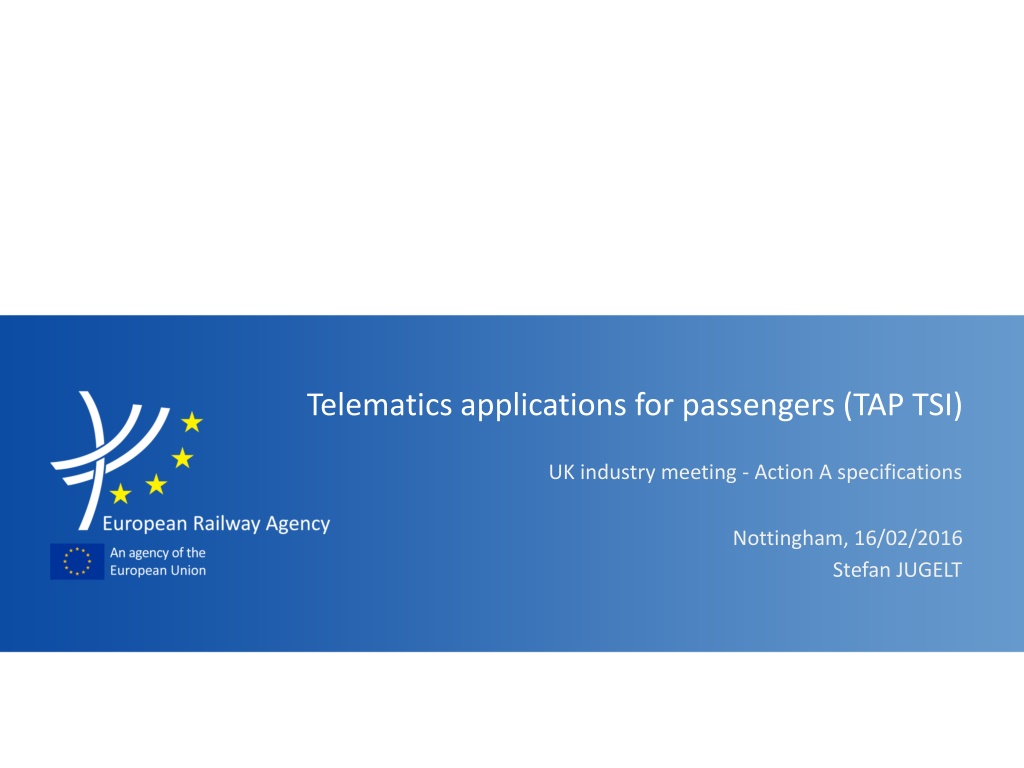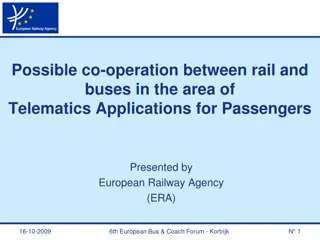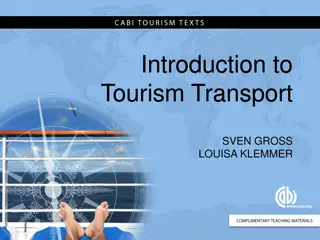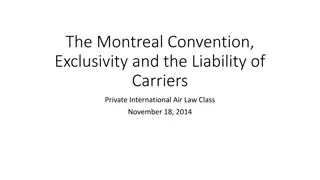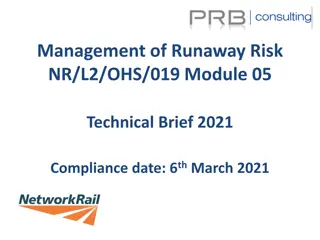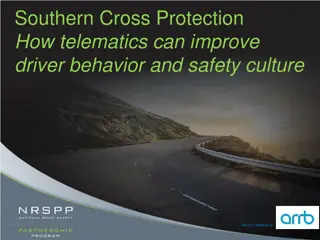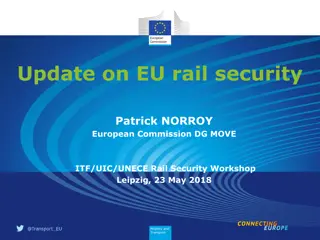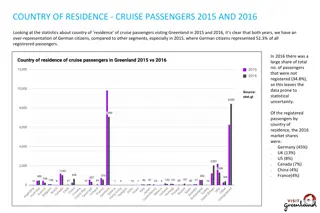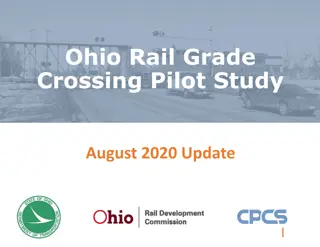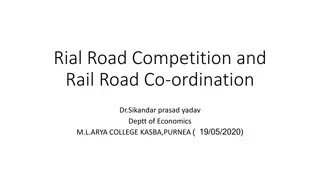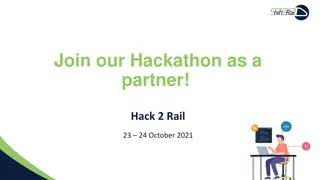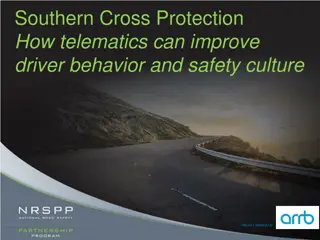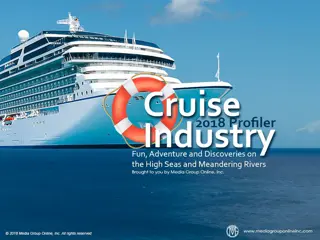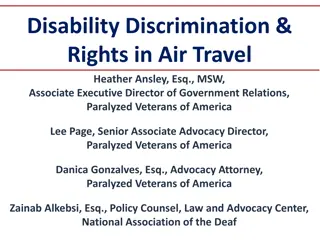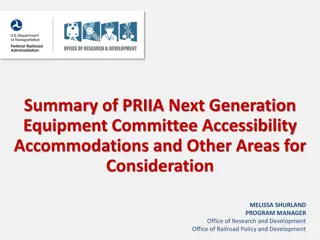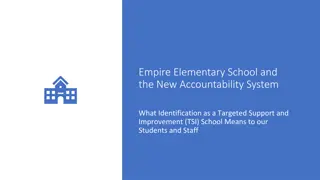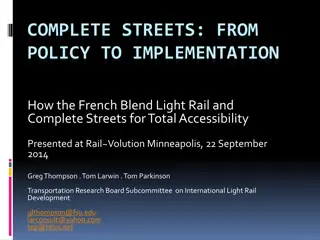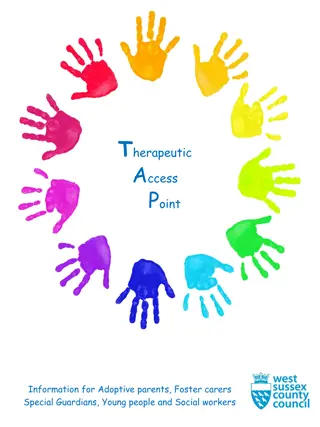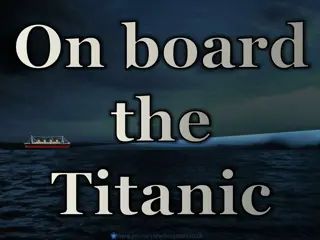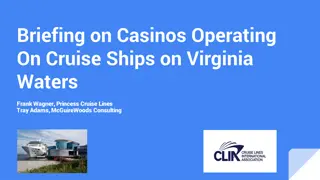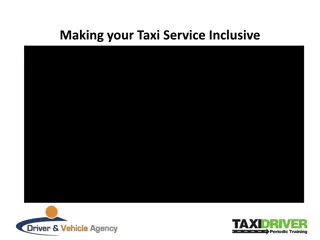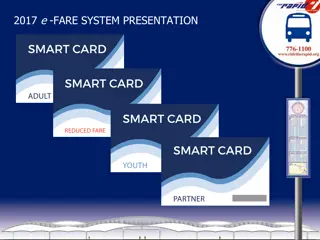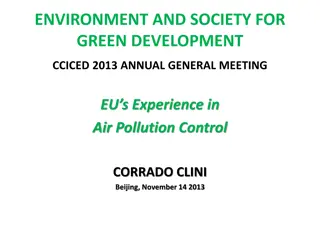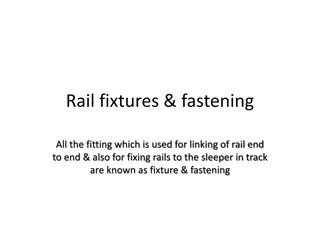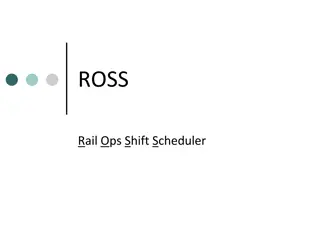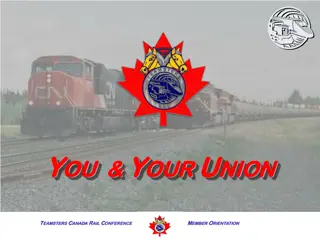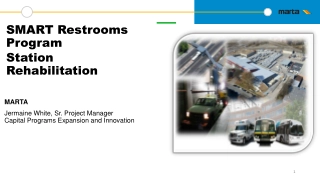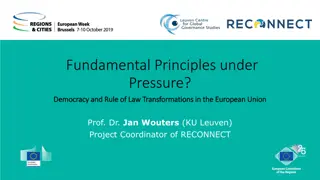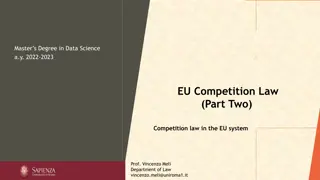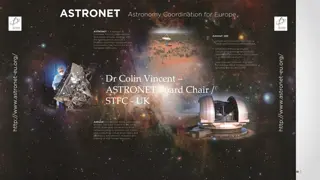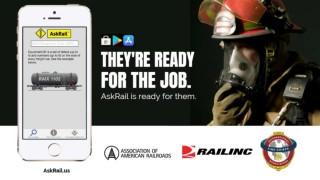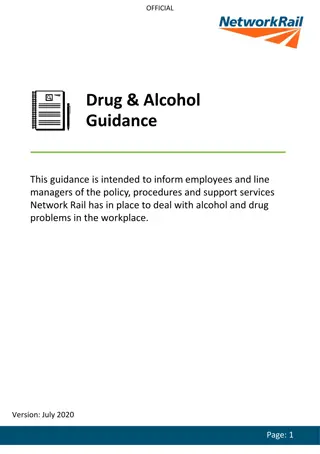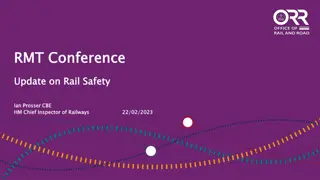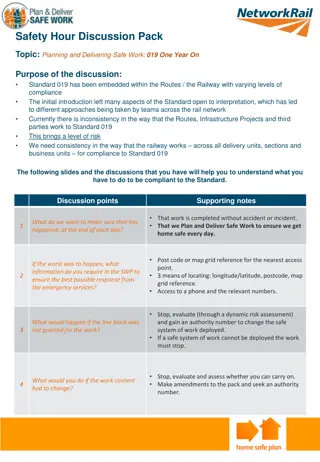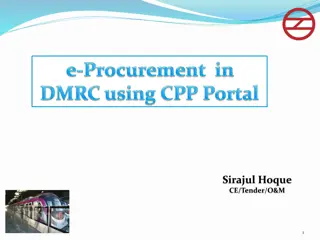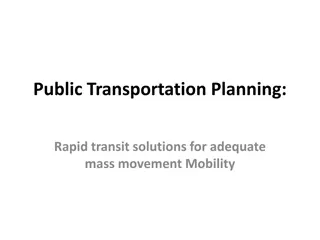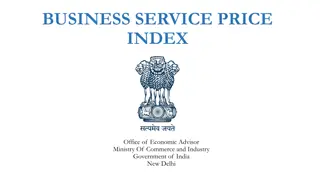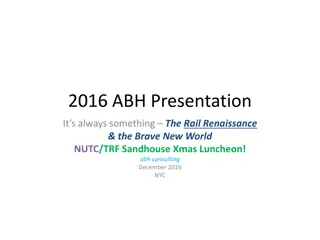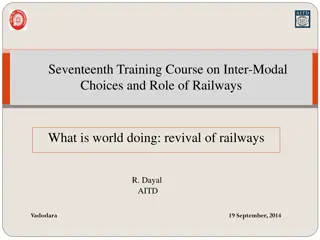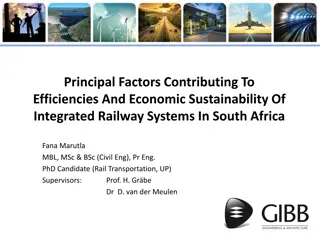Overview of Telematics Applications for Passengers (TAP TSI) in European Rail Legislation
This presentation on Telematics Applications for Passengers (TAP TSI) in the UK industry meeting highlights the legal framework, functionalities, jargon used, and European rail legislation. It covers standards, technical specifications, abbreviations, and European legal documents governing passenger services. The European Rail Legislation for TAP TSI includes directives on interoperability, rail passengers' rights, pre-journey information, on-board services, delays, and security measures.
Download Presentation

Please find below an Image/Link to download the presentation.
The content on the website is provided AS IS for your information and personal use only. It may not be sold, licensed, or shared on other websites without obtaining consent from the author. Download presentation by click this link. If you encounter any issues during the download, it is possible that the publisher has removed the file from their server.
E N D
Presentation Transcript
Telematics applications for passengers (TAP TSI) UK industry meeting - Action A specifications Nottingham, 16/02/2016 Stefan JUGELT
Content of this presentation 1. Legal framework for TAP TSI Standardisation 2. Telematics applications for passenger services (TAP TSI) Functionalities Example: Technical documents for timetable data Example: Connections with other modes of transport 3. Questions and Answers 2
The jargon used in this presentation Abbreviation Title CEN European Normalization Committee CI Common Interface EC European Commission ERA European Railway Agency IM Infrastructure Manager LRU Lead railway undertaking PRM Passengers with Reduced Mobility RISC Railway Interoperability and Safety Committee RU Railway Undertaking TAF TSI Telematics Applications for Freight - Technical Specifications for Interoperability TAP TSI Telematics Applications for Passengers Technical Specifications for Interoperability TD Technical Document of the European Railway Agency 3
European Rail Legislation for TAP TSI The Telematics applications for passenger services (TAP TSI) is based on the following legal documents: Directive 2008/57/EC on the interoperability of trans-European rail system (Annex II) European Rail Passengers Rights Regulation EC/1371/2007 (Art 10 and Annex II). Above documents are publicly available at the EU web site http://eur-lex.europa.eu/en/index.htm. Affected parties: Railway undertakings, infrastructure managers, ticket vendors N 5
European Rail Legislation for TAP TSI e.g. passenger information Passenger rights regulation EC/1371/2007 Annex II: Part I: Pre-journey information General conditions applicable to the contract Time schedules and conditions for the fastest trip Time schedules and conditions for the lowest fares Accessibility, access conditions and availability on board of facilities for disabled persons and persons with reduced mobility Accessibility and access conditions for bicycles Availability of seats in smoking and non-smoking, first and second class as well as couchettes and sleeping carriages Any activities likely to disrupt or delay services Availability of on-board services Procedures for reclaiming lost luggage Procedures for the submission of complaints. Part II: Information during the journey On-board services Next station Delays Main connecting services Security and safety issues. N 6
The railway standardisation pyramid 1.Safety 2.Reliability and availability 3.Health 4.Environmental protection 5.Technical compatibility 6.Accessibility Interoperability Directive 6 Essential Requirements Mandatory Rules TSIs + NNTRs Mandatory Specified in TSIs / NNTRs (OTIF Rules) Level of DETAIL Standards directly quoted in TSIs, Technical documents EN s ISO Harmonised EN Standards Voluntary Applicant chooses own specification Other public standards and documents UIC Company standards 7
Standards vs. Legislation Standards : Voluntary (unless otherwise specified in legislation) Consensus of stakeholders Developed by independent private organisations Revised regularly (~every 5 years) Provide usually technical specifications and test methods (interoperability, safety, quality, management, etc.) Harmonisation tools (harmonised standards) Legislation : Mandatory Established by public authorities Revised when legislators so decide May refer to a change control process for annexes (e.g. CCS TSI, TAF/TAP TSI) Gives requirements to protect public interests Can make reference to standards (which then become mandatory) Harmonisation foundation (New Approach Directives, removal of barriers to trade) 8
Purpose of TAP TSI The Technical Specification for Interoperability on Telematics Applications for Passengers (TAP TSI) prescribes protocols for the data exchange of: timetables, tariffs, reservations, fulfillment Information to passengers in station and vehicle area train running information, Etc. which must be respected by the European rail sector (railways, infrastructure managers, ticket vendors etc.) according to the European Rail Passengers Rights Regulation EC/1371/2007 and to the Interoperability Directive EC/2008/57. N 10
Technical Documents of TAP TSI In Dec 2009 ERA has signed contract with UIC according to which UIC has transferred the underpinning UIC leaflets as ERA Technical Documents: - B.1, B.2, B.3 (tariff) - B.4 (timetable) - B.5 (reservation) - B.6, B.7 (ticketing) - B.8, B.9 (reference data) - B.10 (reservation for PRM assistance) Above ERA Technical Documents are annexes of the TAP TSI, thus, legally binding. All Technical Documents are http://www.era.europa.eu/Document-Register/Pages/TAP-TSI.aspx . available at ERA s website at The technical documents are maintained by ERA through a change control management process. UIC is involved in this process. N 11
Example: TAP TSI timetable data exchange Purpose: - Exchange of timetable data Conditions: - Annual timetable must be published at months before entering into force - Timetable changes must be published at least 7 days in advance How: - File in EDIFACT-format (technical document B.4) RU s website least two RU Other RU s Authorities and 3rd parties 12
Connections with other modes of transport Purpose: - Exchange of network, timetable and real- time data - From railway to other transport modes, but not vice-versa Conditions: - No bidirectional exchange! How: - Current: - EN 12896 ( Transmodel ) and EN TC 278 WI 00278207 (IFOPT) for network and timetable data - EN 15531 ( SIRI ) for the exchange of real-time data - Future: - timetable and tariff data exchange based on NeTEx RU Other transport modes N 13
Transmodel and TAP TSI timetable Model elements for Schema for UIC 920-1 based on Transmodel - Detail European Rail Timetable Exchange 1 Organisations stop groups locations TrainX timetables pois 1 Organisations StopPlaces * 1 0..* * 1 1 1 * UIC UIC Timetable Transmodel GroupOfStopPlaces info couples Organisation connections jpurneys IFOPT PointfInterest 0..1 1 1 1 1 * * * reservation *station group *couples * Transmodel Transmodel StopPlace VehicleJourney(UicProduct) 0..* is part of 1 0..* platforms 1 1 0..1 1 1 1 Transmodel JourneyPartCouple * coaches 1 Transmodel ConnectionLink part * * 0..* coupling Calls * 1 IFOPT Quay * TrainBlock from 1 to Transmodel JourneyPart assigned * 0..1 purpose to 0..* station 1 * * VehicleJourneys 1 1 1 PurposeOfJourneyPartition from * * Transmodel ScheduledStopPoint at 1 platform 1 over Call 0..1 0..* * connection 1 Transmodel TargetedInterchange departure 0..* times 1 1 0..* arrival IFOPT StopAssignment * 0..1 0..1 0..* Transmodel PassingTime 14
Implementation of TAP TSI Retail functions: The master plan define the implementation dates for the functionalities of the TAP TSI (retail and RU/IM- communication) N 15
Questions? N 16
Example: TAP TSI - timetable data Example: PRD+00090:::37:::Vauban+0083**0085 POP+273:2003-12-15/2003-12-20::111111 PDT++:::50 SER+9 EC 90 provides a restaurant (code 9). The train runs from MILANO (008301700) via BERN (008507000) and STRASBOURG (008721202) to LUXEMBOURG (008200100). POR+008301700:37:12+*0810 POR+008507000:37:12+1156*1204 POR+008721202:37:12+1444*1446 POR+008200100:37:12+1650 Bicycle transport (code 26) is available only from BERN (stop index 2) to LUXEMBOURG (stop index 4). ODI+008507000*008200100+2*4 SER+26 N 19
NeTEx-Structure - Example Example on a so called vehicle journey (journey undertaken by a vehicle to carry passengers) for a Eurostar train running between London and Paris Shows: - Journey name - Timing points (e.g. stops, passing in a station) - Operating days (validity period + Service calendar as bitmap) 20
